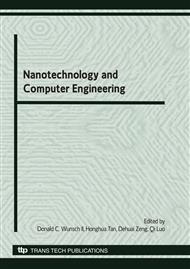[1]
T. Berners-Lee, in: Relational Databases on the Semantic Web, http: /www. w3. org/Design Issues/RDB-RDF. html (1998).
Google Scholar
[2]
A. Y. Halevy, A. Rajaraman, and J. J. Ordille, in: Data integration: the teenage years, Proceedings of the 32nd International Conference on Very Large Data Bases (2006), pp.9-16.
Google Scholar
[3]
Y. Arens, C. A. Knoblock and W. Shen, in: Query reformulation for dynamic information integration. Journal of Intelligent Information Systems, Vol. 6 (1996), pp.99-130.
DOI: 10.1007/bf00122124
Google Scholar
[4]
S. Chawathe, H. Garcia-Molina, J. Hammer, and et al, in: The TSIMMIS Project: Integration of Heterogeneous Information Sources. Journal of Intelligent Information Systems Vol. 4 (1994). pp.7-18.
Google Scholar
[5]
E. Mena, A. Illarramendi, V. Kashyap, and et al, in: OBSERVER: An Approach for Query Processing in Global Information Systems based on Interoperation across Pre-existing Ontologies. Proceedings of the First IFCIS International Conference on Cooperative Information Systems. Vol. 8, No. 2 (1996).
DOI: 10.1109/coopis.1996.554955
Google Scholar
[6]
J. D. Ullman, in: Information integration using logical views. Proceedings of the 6th International Conference on Database Theory (1997). pp.19-40.
Google Scholar
[7]
C. P. Laborda and S. Conrad, in: Bringing Relational Data into the Semantic Web using SPARQL and Relational. OWL, Proceedings of the 22nd International Conference on Data Engineering Workshops, Atlanta, GA, USA (2006), p.55.
DOI: 10.1109/icdew.2006.37
Google Scholar
[8]
R. J. Bayardo, W. Bohrer, R. Brice, and et al, in: Infosleuth: Agent-Based Semantic Integration of Information in Open and Dynamic Environments, SIGMOD Record vol. 26 (1997), pp.195-206.
DOI: 10.1145/253262.253294
Google Scholar
[9]
D. Dou and P. LePendu, in: Ontology-based Integration for Relational Databases, Proceedings of the 2006 ACM symposium on Applied computing, Dijon, France (2006), pp.461-466.
DOI: 10.1145/1141277.1141387
Google Scholar
[10]
J. Wang, J. Lu, Y. Zhang, and et al, in: Integrating heterogeneous data source using ontology, Journal of Software, Vol. 4, No. 8 (2009), pp.843-850.
Google Scholar
[11]
J. Wang, Z. Miao, Y. Zhang, and et al, in: Querying heterogeneous relational database using SPARQL. Proceedings of the IEEE/ACIS International Conference on Computer and Information Science, Shanghai, China (2009). pp.475-480.
DOI: 10.1109/icis.2009.11
Google Scholar
[12]
J. Wang, Y. Zhang, Z. Miao and J. Lu, in: Query Transformation in Ontology-based Relational Data Integration. Proceedings of the Asia-Pacific Conference on Wearable Computing Systems, Shenzhen, China (2010), in press.
DOI: 10.1109/apwcs.2010.83
Google Scholar


